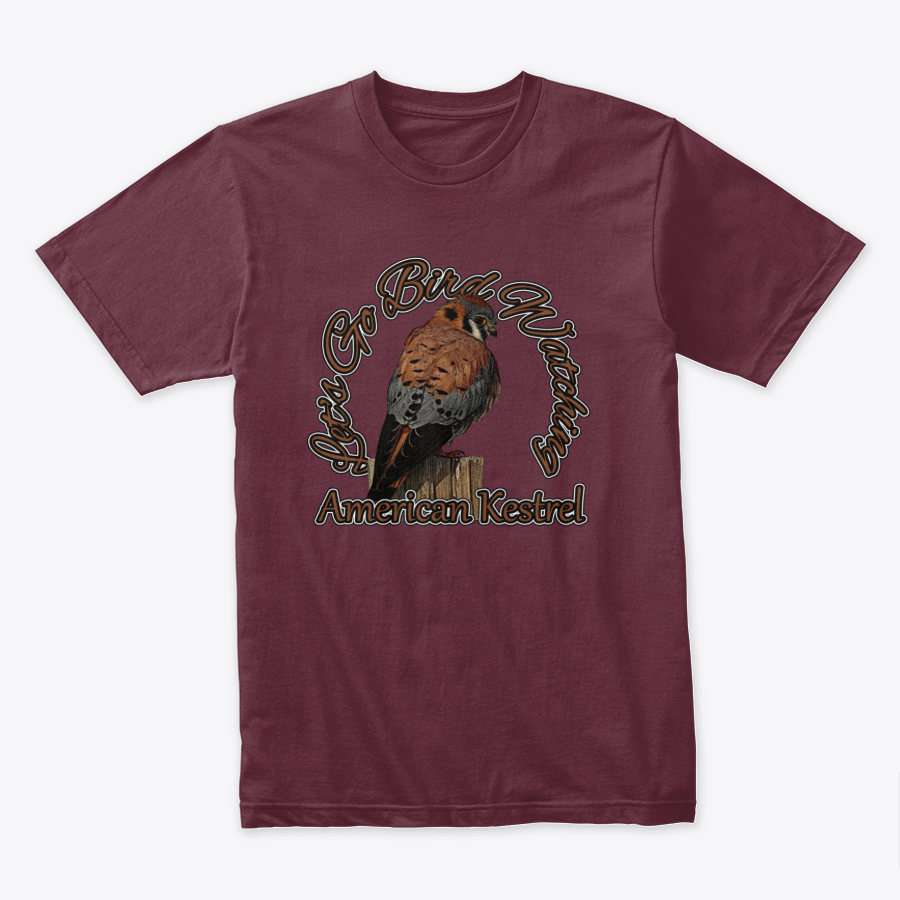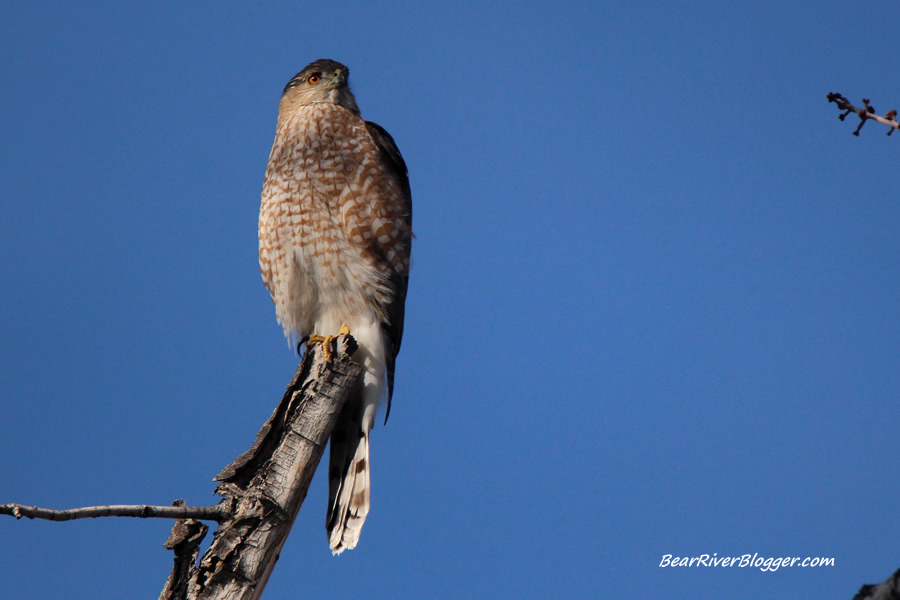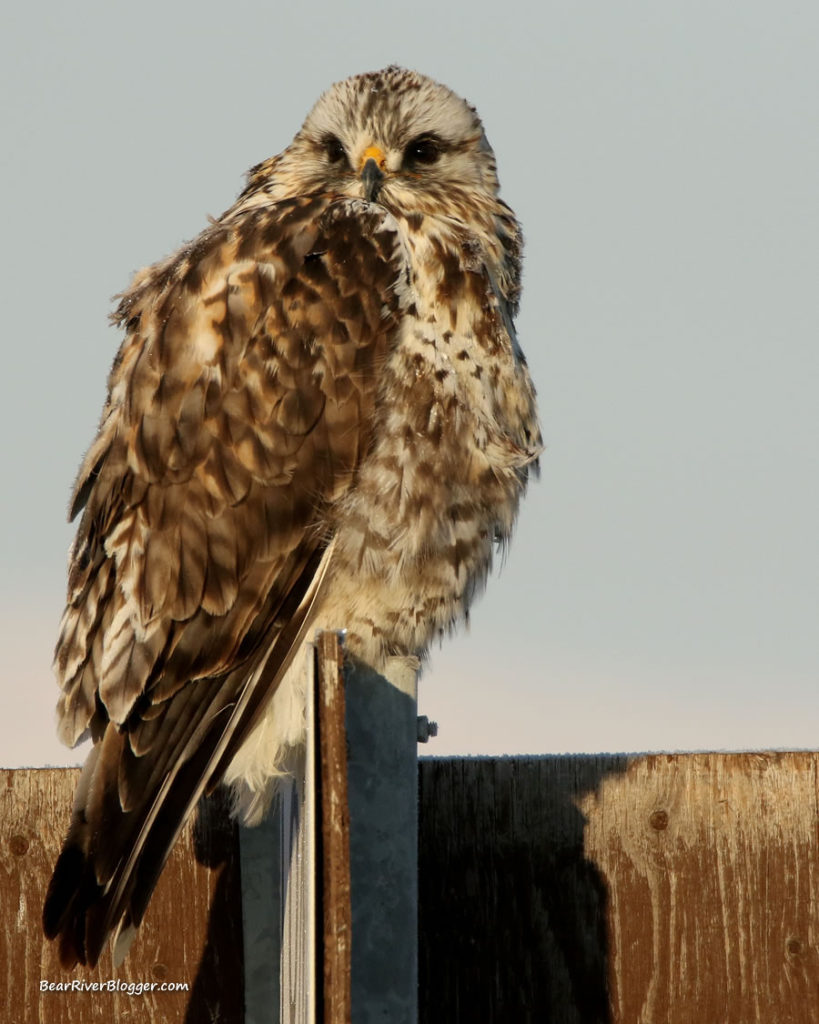As I headed out the door this morning, a male cooper’s hawk caught my attention as it squawked a bit from its perch high up in one of my large backyard trees.
Naturally, as a bird photographer, I had to run back inside and grab my camera to take a photo or two of the hawk perched so eloquently against the bright blue sky.
Nearby in an adjacent tree sits a moderately sized nest, one that actually gets used most years by a pair of breeding cooper’s hawks, giving me hope the male is returning to his longtime nest and once again choosing my yard for this year’s nesting site.
He used it last year but it was a failed breeding season for some unknown reason.
Quite possibly the drought had something to do with it but I don’t know for sure.
Other years, however, I have seen as many as three chicks hatch and successfully fledge to head off on their own and start another generation of cooper’s hawks somewhere else.
Cooper’s hawks are classified as an accipiter, meaning they are a forest-dwelling raptor with a thin, long tail and shorter, quite broad, and well-rounded wings designed to navigate the thick forest canopy with ease.
Their long tail can fan out quite wide and act as a rudder in flight, helping the hawk maneuver some very narrow spaces amongst the tight tree trunks and close branches.
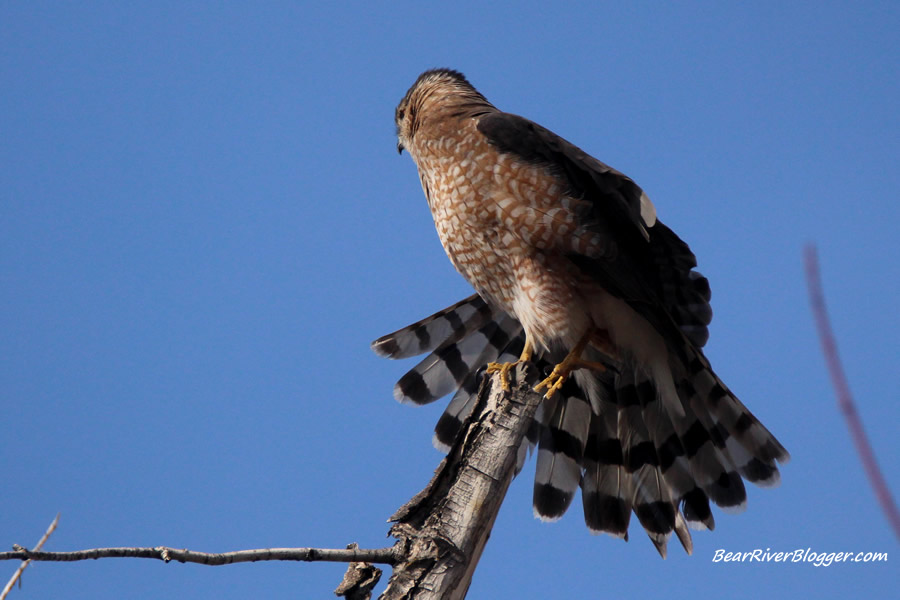
So the question you might be asking at this point is if the cooper’s hawk is built for and typically lives in a heavily forested environment, what are they doing in my backyard in a very urban setting?
That, my friends, is a good question as cooper’s hawks are a forest raptor, plain and simple.
The fact of the matter is, cooper’s hawks do indeed live and can be found in a variety of forested regions and environments but they are also commonly found in wooded urban areas such as city parks and neighborhoods where numerous trees are around.
The key here is trees, cooper’s hawks utilize and need trees to hunt so if a neighborhood has lots of trees, which mine does, there is a very good chance a cooper’s hawk will be hanging out somewhere nearby, at least for part of the year that is.
If you have a neighborhood with lots of trees, you may actually have a cooper’s hawk around and not even know it.

Cooper’s hawks are a fairly common but not always seen bird in urban areas that are heavily wooded with large trees like mine.
Unless you spend a lot of time outside and keep a sharp lookout or are familiar with their distinctive call, you may never know a cooper’s hawk is around, maybe even sitting in one of your large trees during the day in fact.
They oftentimes sit still for long periods of time high up in a tree somewhere where they can be a little bit inconspicuous but can also keep an eye on the surrounding area for an unsuspecting meal.
Cooper’s hawks feed on small and medium-sized birds and the occasional squirrel, but I have also seen them catch a rat once so I know they are able to hunt for more than just birds which, by the way, are their main source of food.
When I was younger, my hobby of choice was raising and flying pigeons, and they were often an easy target for the relentless cooper’s hawk that always showed up each fall and subsequently curtailed my pigeon flying until next spring.
Backyard bird feeders are a very commonplace cooper’s hawks actively hunt around as well as perch nearby and wait for periods of time.
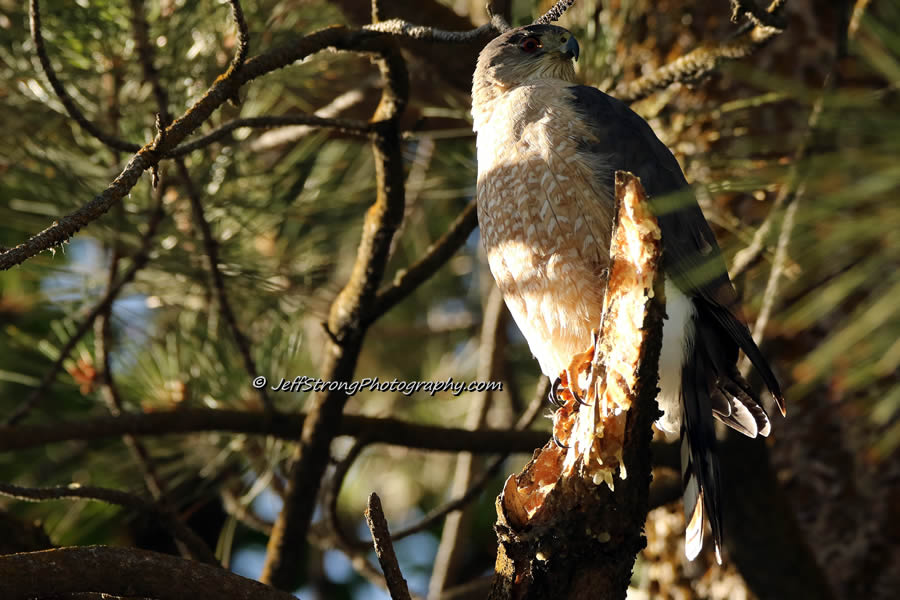
They sit and patiently wait near these feeding stations, hoping to ambush the unsuspecting birds coming and going to the backyard feeders and birdbaths.
I have personally seen cooper’s hawks sit in a distant tree, launch and fly towards our very own bird feeder but drop down and out of sight below the neighbors vinyl fence until at the very last moment where they swoop up and over the fence and dive straight towards the unsuspecting birds on our side of the fence in a well-planned sneak attack that purposely used the fence as a shield until the very last moment of the ambush.
Cooper’s hawks are that smart and cunning when hunting and why they are able to live in urban areas with trees, it’s just another forest to them.
As with some other bird species, the female cooper’s hawk is noticeably larger than the male.
Sometimes it is quite hard, in fact, to tell the much smaller male cooper’s hawk from the female sharp-shinned hawk, a similar-looking but smaller forest dwelling hawk that can also make a living in urban areas.
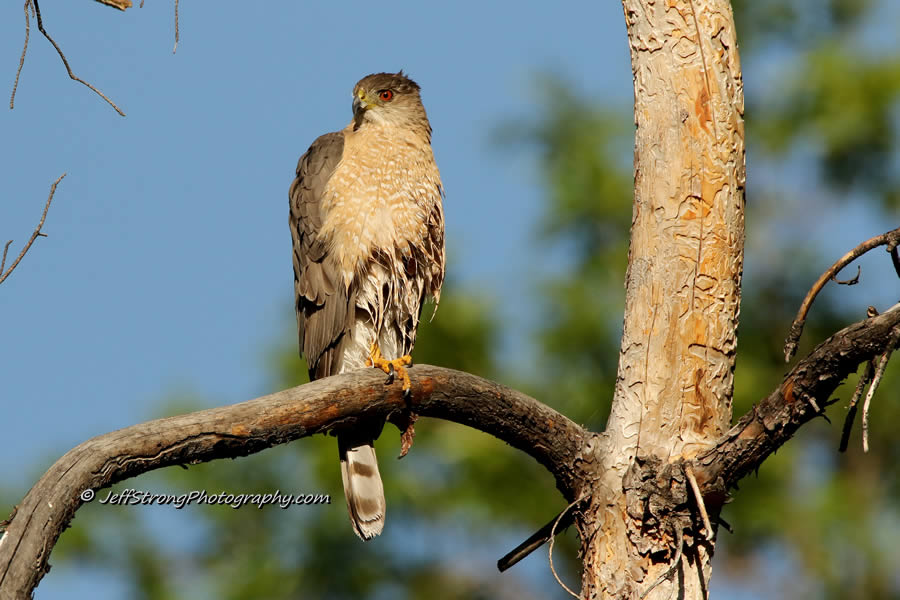
You can fairly easily determine an accipiter from other hawks by their flight pattern, several short, rapid wing flaps followed by a glide is the common wing beat of a forest raptor like the cooper’s hawk.
In North America there are three hawks that are classified as an accipiter, the cooper’s hawk, the sharp-shinned hawk, and the northern goshawk, with the goshawk being a true forest raptor that doesn’t live in urban areas like the other two hawks can and often do.
One interesting trait cooper’s hawks are well known for and something I have personally had experience within my own yard is they are quite aggressive in defending their nesting territory after the chicks hatch until they leave the nest.
On many occasions, I have been dive-bombed by the large female cooper’s hawk in the yard watching her nest as I walked around my house just under their nesting site.

You know two things are definitely happening when a cooper’s hawk dive-bombs you like that, you are very near an active nest and the nest has chicks in it.
They aren’t aggressive at all the rest of the year but when cooper’s hawks have an active nest with chicks and you get inside their space, they will most likely buzz you, especially from behind.
Don’t laugh but this has happened to me enough, in fact, one summer I actually bought a plastic hard hat to protect my head as I mowed the lawn as the dive-bombing hawk would get close enough I could feel the wind from its wings as it swooped down from its perch and just barely cleared my head.
With this behavior it does sound like I am off my rocker to want a cooper’s hawk nesting in my yard again, doesn’t it?
But, honestly, as a very avid bird watcher, this behavior is only during an active nest with chicks and well worth having to walk around the other side of the house for a few weeks to avoid being harassed to have the privilege of a nesting pair of raptors in my trees.
Especially when their chicks start to leave the nest and end up in one of my lower trees for a spell or two, giving me both a great bird watching and photography opportunity for a raptor that most people never get to see so up close like this.

So take it from me, if you are like I am and love raptors, especially accipiter’s like the cooper’s hawk, keep an eye out in your backyard trees and neighborhood, you just might be pleasantly surprised one day with a cooper’s hawk either perched in a nearby tree or hustling through the neighborhood in search of an unsuspecting meal.
If you are a bird watcher like I am, don’t forget to head on over to our subscribe page and sign up for email notification for future blog posts as well as share our site with your birding friends.
We also have a small but growing YouTube channel we occasionally post updates about the Bear River Migratory Bird Refuge as well as short nature clips when we can capture them with our camera.
Let’s Go Bird Watching American Kestrel T-shirt, available in a variety of colors and styles. Visit our online store for more information or to make a purchase, and use coupon code save20 for 20% off for a limited time.
